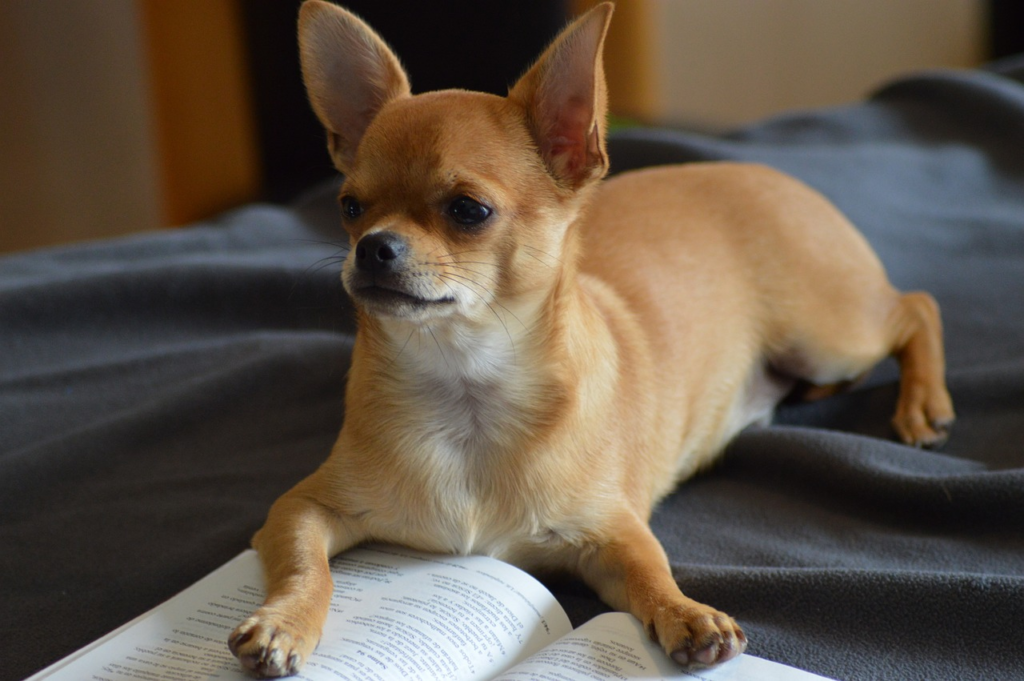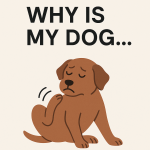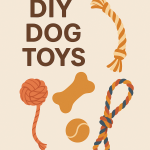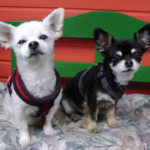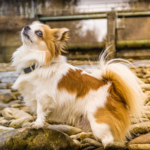Ever seen your Chihuahua turn into a nervous wreck when you leave the house? It’s not just you; many pet owners face this issue. Chihuahua separation anxiety is quite common. Knowing about it is crucial for your pet’s comfort and your peace of mind. We’ll look into how to manage this anxiety, making your pet happier and calmer.
By understanding the causes and signs of separation anxiety, you can help your Chihuahua feel better. Taking steps to address this issue can improve your pet’s life greatly.
Understanding Chihuahua Separation Anxiety
It’s important to understand Chihuahua separation anxiety to help your pet. This is when a Chihuahua feels stressed when left alone. It can cause bad behaviors, so it’s key to spot and fix it early.
What is Separation Anxiety?
Separation anxiety means a dog gets really upset when left by themselves. It comes from feeling not secure with their owner. Chihuahuas, being small and very attached, often get this. They might act out or make a lot of noise because of it.
Signs of Separation Anxiety in Chihuahuas
Knowing the signs of separation anxiety in Chihuahuas helps with early help. Look out for these signs:
- Whining and barking when left alone
- Destructive behavior, such as chewing or digging
- Pacing or restlessness, often around the areas where their owners are
- Excessive drooling or panting
- Attempts to escape from the area where they are confined
Causes of Separation Anxiety in Chihuahuas
Several things can cause separation anxiety in Chihuahuas. Important reasons include:
- A change in the household, such as moving to a new home
- Traumatic experiences, such as abandonment or a previous owner’s loss
- Disruptions in the daily routine, like sudden changes in work schedules
- Lack of socialization with other pets and environments
Knowing these reasons can help owners find ways to ease their Chihuahua’s anxiety.
Symptoms of Separation Anxiety in Chihuahuas
It’s crucial to know the signs of separation anxiety in Chihuahuas. Spotting these signs early helps owners help their dogs feel better.
Common Behavior Indicators
Watch for signs that show your Chihuahua might be anxious when alone. Look out for:
- Excessive barking or howling when left alone
- Destruction of household items, such as furniture or toys
- Inappropriate elimination, like urinating or defecating indoors
Pacing and Restlessness
Pacing and restlessness are big clues that a Chihuahua is anxious. They might walk around a lot or keep changing spots. This shows they’re feeling anxious and need help.
Vocalization and Destructive Tendencies
Chihuahuas with anxiety often make a lot of noise when they’re alone. They might bark, whine, or whimper. They might also chew on furniture or scratch doors trying to get out.
How to Help Chihuahuas with Separation Anxiety
Helping Chihuahuas with separation anxiety means taking a tailored approach. By using different strategies, you can make these small dogs feel secure when left alone.
Establishing a Routine
Creating a routine is a great way to ease Chihuahua separation anxiety. It gives them a sense of what to expect every day. This includes regular times for meals, walks, play, and rest.
A steady schedule helps lower anxiety and lets your dog know what’s next. It’s a way to make them feel more secure.
Gradual Desensitization Techniques
Gradual desensitization is key in reducing separation anxiety. Start by leaving your Chihuahua alone for a little while, then slowly increase the time. Reward them when you return to build trust.
This method helps your dog learn that you always come back. It’s a step-by-step process that makes them more comfortable with your absence.
Behavior Modification Strategies
Changing how your Chihuahua feels about being alone can be done with behavior modification. Reward them for staying calm when you leave and come back. Training can also help, by teaching them to associate being alone with positive things like treats or praise.
Utilizing Calming Aids
Calming aids can really help Chihuahuas with separation anxiety. There are things like anxiety wraps, diffusers, and supplements made for pets. These can be used along with other strategies to help manage their anxiety.
| Strategy | Description | Benefits |
|---|---|---|
| Establishing a Routine | Setting consistent daily schedules for meals, walks, and play. | Reduces anxiety through predictability. |
| Gradual Desensitization Techniques | Leaving your dog alone for increasingly longer periods. | Builds trust and understanding about separations. |
| Behavior Modification Strategies | Training programs focusing on positive reinforcement. | Encourages calm behavior during departures and arrivals. |
| Utilizing Calming Aids | Using wraps, diffusers, and supplements to ease stress. | Provides immediate comfort and relief. |
Separation Anxiety Training for Chihuahuas
Helping Chihuahuas with separation anxiety means using a plan made just for them. By using the right training methods, you can make them feel better when they’re alone.
Implementing Effective Training Methods
Training Chihuahuas for separation anxiety includes a few important steps:
- Gradual desensitization: Get your pet used to being alone by leaving for short times and slowly increasing it.
- Positive reinforcement: Give treats or praise when you leave and come back to help them see being apart as good.
- Practice short departures: Begin with short times away and make it longer as your pet gets more comfortable.
Working with a Professional Trainer
Many pet owners find it helpful to work with a professional trainer. These experts know a lot about animal behavior and can make a training plan just for your dog. The benefits are:
- Personalized assessments: A trainer looks at what makes your Chihuahua anxious and what they need.
- Tailored strategies: Plans that fit your dog’s feelings help them learn better.
- Ongoing support: Getting help from a pro keeps your training on track for better results over time.
| Training Method | Description | Benefits |
|---|---|---|
| Gradual Desensitization | Increasing separation duration slowly. | Reduces anxiety over time. |
| Positive Reinforcement | Reward system for calm behavior. | Encourages desired behavior. |
| Professional Training | Expert guidance and personalized plans. | Ensures tailored strategies for success. |
Separation Anxiety Solutions for Chihuahuas
Helping Chihuahuas with separation anxiety means using a mix of strategies. These strategies keep Chihuahuas busy and secure when left alone.
Interactive Toys and Mental Stimulation
Interactive toys are great for Chihuahuas with separation anxiety. They offer mental stimulation by making them think and play. Toys that give treats or need to be manipulated keep Chihuahuas busy and less anxious.
Providing Comfort Items
Using comfort items is also important. Things like worn t-shirts or blankets with your scent can make them feel safe. These items help Chihuahuas stay calm when you’re not there.
Ensuring Adequate Exercise
It’s key to make sure Chihuahuas get enough exercise. Taking them for long walks or playing hard before you leave can help. This makes them tired and less anxious, which is good for them.
Conclusion
Managing Chihuahua separation anxiety means understanding their special needs and using various strategies. By spotting the signs and symptoms, owners can help their pets. This helps in using behavior training and adding fun activities to their days.
Also, giving pets the right toys and comfort items can make their space calmer. With dedication to solving these issues, it’s possible to have a happy and peaceful pet. Even though fixing separation anxiety takes time and patience, the outcome—a more calm Chihuahua—is worth it.
FAQ
Q: What is separation anxiety in Chihuahuas?
A: Separation anxiety in Chihuahuas is when they get very stressed when left alone. They may act out in panic-like ways.
Q: What are the common signs of separation anxiety in Chihuahuas?
A: Signs include a lot of barking or howling, breaking things, going to the bathroom where they shouldn’t, pacing, and being restless when alone.
Q: What causes separation anxiety in Chihuahuas?
A: It can be caused by changes at home, bad past experiences, changes in routine, or their genes.
Q: How can I help my Chihuahua cope with separation anxiety?
A: You can help by setting a regular routine, using slow steps to help them get used to being alone, trying different strategies, and using calming tools.
Q: What are effective training methods for Chihuahuas with separation anxiety?
A: Good training methods include slowly getting them used to being alone while staying calm. Also, use positive rewards to encourage good behavior.
Q: Should I work with a professional trainer for separation anxiety?
A: Yes, a professional trainer can make a big difference. They can create a training plan just for your Chihuahua to help them handle being alone better.
Q: What are some solutions for managing separation anxiety in Chihuahuas?
A: Solutions include giving them toys to keep their minds busy, using items that smell like you, and making sure they get enough exercise before you leave.
Q: How long does it take to see improvement in a Chihuahua with separation anxiety?
A: Improvement time varies. With regular training and patience, many see changes in weeks to a few months. Each dog is different, so progress can vary.
Source Links
- How to Ease Your Dog’s Separation Anxiety – https://www.webmd.com/pets/dogs-separation-anxiety
- How to Help a Dog With Separation Anxiety – https://www.petmd.com/dog/training/how-help-dog-separation-anxiety
- Our Top Tips for Curing Dog Separation Anxiety Quickly – Snouts and Stouts – https://snoutsnstouts.com/dog-behavior/curing-dog-separation-anxiety/
